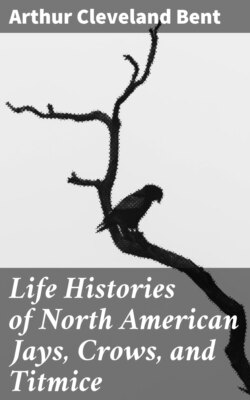Читать книгу Life Histories of North American Jays, Crows, and Titmice - Arthur Cleveland Bent - Страница 31
На сайте Литреса книга снята с продажи.
CYANOCITTA STELLERI CARLOTTAE Osgood
QUEEN CHARLOTTE JAY
ОглавлениеTable of Contents
This island form was named by Dr. Wilfred H. Osgood (1901) and described as “similar to C. stelleri, but larger and darker colored; abdomen and flanks deep Berlin blue instead of Antwerp or China blue as in C. stelleri; frontal spots much reduced; black of head extending on breast and merging into blue of abdomen without sharp demarcation. * * *
“The large size and dark color of this jay were noticed in the field, and subsequent comparison of specimens in the museum showed these characters to be amply sufficient to distinguish it from the mainland form C. stelleri. * * * Jays are not very common on the islands. They were seen only occasionally and were generally in family parties of four to six adults and young” [June 13 to 25].
Almost nothing seems to have been published on the habits of this jay, as very little ornithological work has been done on the Queen Charlotte Islands, to which the subspecies seems to be confined. Though I have no notes on the subject I have no reason to think that its habits differ in any respect from those of the mainland from, which lives in a similar habitat. So far as I know, there are no authentic eggs of this race in collections.
Clyde A. Patch (1922) found it fairly common on Graham Island, “usually moving about in family parties. Frequently seen feeding on green fruit of the Skunk Cabbage which they manage to remove from its stem and carry to a comfortable spot on a trail, roadway or log. On one occasion a Jay was observed to capture a young wood mouse.”
